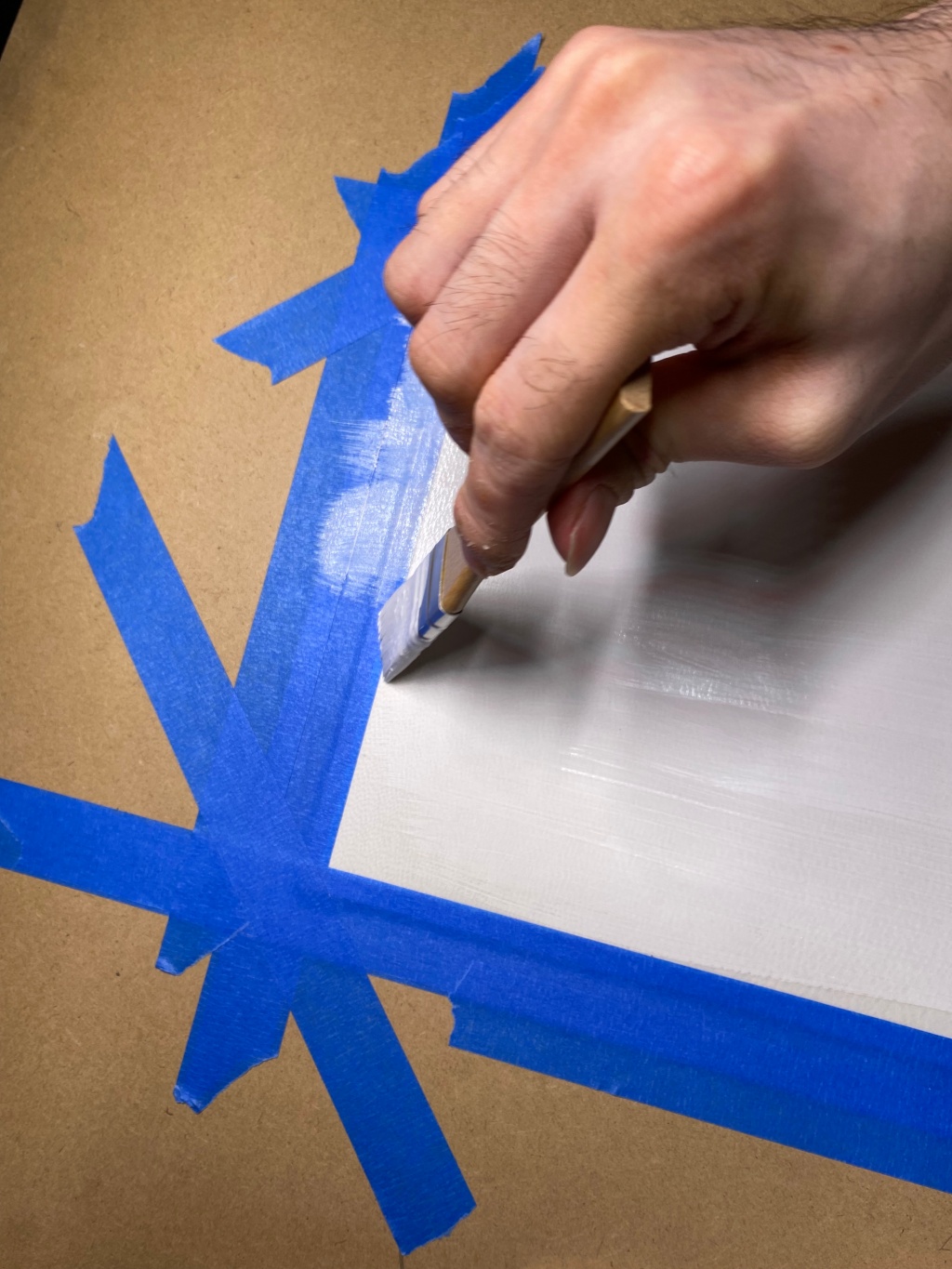For gessoing the wood panel, we used art conservator Lorraine Brevig’s recipe.
1 oz rabbit skin glue
10 oz distilled water
Gilder’s whiting
Clearcole is thin hide glue mixed with a small amount of whiting. Applied warm to size the raw wood of the panel.
Heat water and glue until dissolved. Pour warm hide glue into large warmed glass jar. Add 16-20 heaping tablespoons of gilder’s whiting to the glue size, one spoonful at a time. Stir with wooden stick. Brush on over surface with clearcole previously applied. (Use stiff white bristle brush for clearcole.) Use oxhair brush to apply gesso. Let dry 2-3 days after last coat is applied. (5-8 coats)
For the gessoing of parchment, we used Natural Pigments adapted recipe from Cennino Cennini’s The Craftsman’s Handbook.
Gypsum. Hydrated calcium sulfate
Zinc white pigment
Distilled water
Cheesecloth
Scale
Measuring cup
Newspapers or drop cloth
Wooden spoon or medium-large bristle glue brush
Rabbit skin glue
Stove
Double boiler
Begin making the gesso by heating 8 ounces of the size solution in the double boiler. Never overheat it. When the size is hot, remove the upper pan from the lower one on the hot plate. Turn the hotplate temperature low—mix one part zinc white pigment with two parts gypsum. Add 12 ounces of the gypsum mixture to the size very slowly, sprinkling it in little by little, being careful not to form lumps. Eventually, use a tablespoon to scatter the remainder of the gypsum into the solution by sprinkling it around the bowl’s perimeter to avoid a build-up in the center.[3]
Using either a sizeable stiff glue brush or a wooden spoon (I prefer the spoon), stir the mixture very carefully, avoiding rapid movements. The point is to stir, not mix thoroughly. The gesso incorporates on its own in the next step.
Pour the gesso into a clean bowl. Clean the double boiler and brush or spoon. Stretch two layers of cheesecloth over the clean double boiler and pour the gesso through it slowly and carefully. Use your brush to get all the gesso out of the bowl and through the sieve.
Remove the cheesecloth. Wash your spoon or brush and carefully stir the gesso again. At this point, the gesso may have cooled and congealed. Place it over the boiler to ensure the water is very hot, and stir until it liquefies, then remove it immediately. Excessive heat will create air bubbles in the gesso, ruining the gessoed surface.
